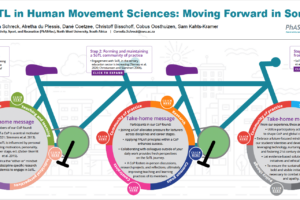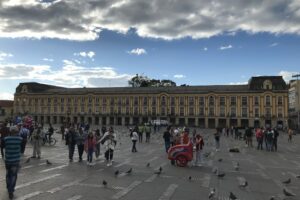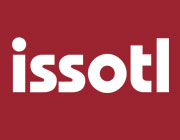Notification of Bylaws Updates
Over the past few months, the Board has approved several changes to the Society’s Bylaws. These changes are intended to fix oversights (e.g., the absence of the Students and SoTL Committee from the bylaws) and to clarify and update processes and descriptions (e.g., a change to our membership year and resident agent). Each of these changes is an example of the kind of modification the existing bylaws permit the Board to make without a vote of the members. The relevant sections of the bylaws, which outline changes the Board can make, are provided below for reference.
Article I: Name, location, offices, and resident agent
… The address for the Society’s primary office and its resident agent can be changed by the Board of Directors without amendment of the bylaws.
Article III: Membership
…The membership renewal structure can be changed by the Board of Directors without changes in the bylaws
Article VI: Standing Committees
Section 4: Committee structure
The Board of Directors may add, modify, or delete Standing Committees without a vote of the membership. Any changes in the committee structure will be announced to the membership and presented as information by the Leadership and Elections Committee at the annual face-to-face business meeting….
Article XII: Amendment of Bylaws
Amendments may be proposed by any member to the Board of Directors. Upon Board of Directors approval of the Bylaw amendment, the amendment is sent to the membership for voting. The amendment carries if two thirds of the votes cast are for the amendment. The amendment goes into effect on the following July 1. The Board may change the names or ordering of by-laws sections and sub-sections without requiring a vote of the membership. Changes made by the Board without a vote will be announced to the Members on the website and at the next annual face-to-face business meeting of the Society.
Below, we describe all 15 Bylaws revisions made by the Board of Directors under these terms. We also describe one additional change that members voted to approve at the October 13 members meeting in Calgary. We use plain text to describe the revision and the purpose of the revision, bold text for the articles/sections of the bylaws, and red text for revised Bylaws language.
REVISION #1
In Article IV: Election and Functioning of Board of Directors there were two “Section 5” headings and no “Section 4” heading. This was corrected so there is now a Section 4 and a Section 5.
REVISION #2
In Article VI: Standing Committees, the spacing between the descriptions of the various committees in Section 1 and then “Section 2: Appointment of Committee Members” was confusing. When the Board talked about this in the February 2017 Board meeting, some people seemed to think Section 2 applied only to the Advocacy Committee because it followed that description so closely. Actually, Section 2 applies to all committees. Additional space was inserted between the end of the committee descriptions (Section 1) and the start of Section 2 to clarify this.
REVISION #3
The description of the Communications Coordinator was previously included in Article IV: Election and Functioning of Board of Directors. However, the Coordinator is not an elected member of the Board. To remedy that placement issue, the Coordinator position description was moved to below the Communications Committee description in Article VI: Standing Committees, Section 1.
REVISION #4
In Article VI: Standing Committees, “Section 1: Standing Committees,” Membership Committee, we replaced the reference to the “Communications Coordinator” with “representative of the Communications Committee” and clarified the final phrase – so the new Bylaws language reads as follows:
The Secretary chairs this committee. The Treasurer and a representative of the Communications Committee serve on this committee, and the committee will have minimum of seven members.
This aligns with a recommendation of a Board task force focusing on Communications that has been working this year (and this specific suggestion was made by Dan Bernstein).
REVISION #5
In Article VI: Standing Committees, “Section 1: Standing Committees,” the existing description of the Advocacy Committee was replaced with the following revised description (which better reflects the committee’s current structure and processes):
Advocacy Committee
ISSOTL promotes faculty, staff, and student voices, informed by research on learning in classrooms and related contexts, in discussions of pedagogy, curricula, and success in higher education. ISSOTL encourages its members to make their voices heard in colleges and universities, disciplinary and professional associations, and other relevant organizations and public bodies, as well as through the media. The Advocacy committee was formed to foster such discussions – as an organization but also among ISSOTL members – about the relevance of SOTL for improving education and for policy development within and outside of the academy. The committee will support such communication via the organization’s website, a social media presence, collaboration with special interest groups, and active involvement at conferences. It also provides resources, guidelines, and models to help ISSOTL members share research-based insights on teaching and learning with audiences within and outside of the academy, including the media and policy makers.
Committee reports will include a summary of activities, issues to which ISSOTL can contribute constructively, and opportunities to do so. The committee will also make suggestions to the Conference and Convenings Committee about signature features of the annual conference that can promote networking and collaboration for advocacy, and when possible, coordinate at least one conference session focused on some aspect of advocacy.
The Board appoints the co-chairs. Co-chairs will serve two-year, alternating terms to promote continuity. Co-chairs may serve for a maximum of two consecutive terms, but then may immediately serve as a regular member of the committee. At least one member of the Board and one member of the Communications Committee shall serve on the Advocacy Committee. At minimum, the committee will have five members, including the co-chairs.
REVISION #6
In Article VI: Standing Committees, “Section 1: Standing Committees,” the following description of the Students and SoTL Committee was inserted (this committee currently was not previously listed in
ISSOTL Students & SoTL Committee
The Students & SoTL Committee recognizes the value that the Society places on the role of students in all activities pertaining to teaching and learning, and as such, advocates for meaningful engagement of students in SoTL and the Society. The committee’s responsibilities include: (a) acting as a direct line of communication between the Board and other groups within the Society that have particular interest in or relevance to students, including certain Special Interest Groups; (b) managing the Society’s student awards including advertising, coordinating of judges, tabulation of results, and announcing the awards; (c) coordinating student events at the annual conference; (d) responding to relevant requests from the Board and the Society’s members; and (e) identifying recruitment and retention measures to increase and sustain student membership in the Society.
At the meeting of the Board at the annual conference the committee co-chairs present a written report of the committee’s activities, highlighting issues to which the Society can contribute constructively, and advising other Society committees and initiatives on issues pertaining to students and student members.
The elected Student Representatives to the Board serve as co-chairs of this committee. The committee has a minimum of eight members, including representatives of relevant Special Interest Groups, at least two general Society members who are students, and at least one member who is not a student.
REVISION #7
In Article III: Membership, “Section 2: Dues”, the dates of the membership cycle were changed to reflect the modification in cycle dates recommended by the Membership committee, and approved by the Board in January 2017. The revised bylaws text reads as follows:
The membership year begins on the 1st of January each year, and renewals are due by the 31st of December of each year. The membership renewal structure can be changed by the Board of Directors without changes in the bylaws.
REVISION #8
In Article IV: Election and Functioning of Board of Directors, “Section 4: Board of Directors Leadership Roles”, the following sentence was removed from the description of the President’s responsibilities:
The President or a presidential designee chairs the Conference and Convening Committee.
In recent practice, this has always been a specific designee: the President-Elect. We have adapted our processes for connecting with and supporting local hosts with this in mind.
REVISION #9
In Article IV: Election and Functioning of Board of Directors, “Section 4: Board of Directors Leadership Roles”, the description of the President-Elect’s committee responsibilities was modified to reflect the change suggested in Revision #8 above. The new text reads as follows:
The President Elect chairs the Conferences and Convenings Committee, and serves on the Budget and Finance Committee and the Leadership and Elections Committee.
See explanation above (Revision #8)
REVISION #10
In Article IV: Election and Functioning of Board of Directors, “Section 4: Board of Directors Leadership Roles”, the description of the Secretary’s committee responsibilities was modified to reflect the changes suggested in Revisions #11 & 12 below. The new text reads as follows:
The Secretary chairs the Membership Committee, and serves on the Communications and Budget & Finance Committees. The Secretary also coordinates the Interest Groups, and supervises collection of membership dues and of conference registration fees.
This change aligns with recommendations made by the current Chair of the communications committee and the outgoing Chair of the Budget & Finance committee. The Secretary offers vital information about membership and related processes that is seen as fundamental to the work of both committees. The current Secretary confirmed that these changes are both feasible and important.
REVISION #11
In Article VI: Standing Committees, “Section 1: Standing Committees”, Communications Committee, the Communications Coordinator was removed from the list of members, and the Secretary was added – so the new Bylaws language reads as follows:
The Board of Directors appoints a Board member to chair this committee. The Secretary and Treasurer also serve on this committee with a minimum of seven members.
This aligns with a recommendation of the task force on web communications that has been working this year and with a request made by the current Chair of the communications committee. The Secretary offers connections between the communications process and the membership database that are essential to the running of the committee.
REVISION #12
In Article VI: Standing Committees, “Section 1: Standing Committees”, Budget & Finance Committee, the Secretary was added to the list of members – so the new Bylaws language will read as follows:
The Board appoints a member as Chair of the Committee, and the Treasurer, the Secretary, and the President-Elect also serve as members of the Committee. The Chair shall seek a certified accountant among the Society’s membership to serve on the committee, and failing that, secure professional accounting consultation to advise on the structure of the Society’s financial plans and provide a periodic formal review of the Society’s financial records (at least once per fiscal year). The committee shall have at least five Society Members, appointed by the committee chair.
This aligns with a recommendation made by the outgoing Chair of the Budget & Finance committee. The Secretary offers essential information about membership processes that are central to the Society’s financial health.
REVISION #13
In Article VI: Standing Committees, “Section 1: Standing Committees”, Conferences and Convenings Committee, the Chair of the committee was changed from President to President-Elect, so the description reads as follows:
The President-Elect chairs the committee. The President, a representative from the last conference host, a representative from the next conference host, and the Treasurer serve on the committee. The committee has a minimum of nine members, with preference for inclusion of a representative from each future host.
This change will reflect our current practice, and promote alignment between various sections of the bylaws. In previous versions of the bylaws, it was stated that the President or a delegate chairs the Convenings Committee. In recent years, it has always been the President-Elect and we’ve revised our Conference processes with this in mind. (See also Revisions #8 & 9 above)
REVISION #14
In Article VI: Standing Committees, “Section 2: Appointment of Committee Members ”, the description of the appointment process and terms was modified to acknowledge committees for which the 3 year, appointed term process does not apply and to loosen the restriction on serving more than 2 terms on a committee (the previous version suggested only 1 renewal is allowed). The revised text reads as follows:
Except where specified otherwise in the committee descriptions or Board of Directors Leadership Roles sections above, committee members are appointed by the committee chair for a three-year term and may serve no more than twice consecutively; there must be at least a 1-year gap after the second term before a person can rejoin a committee. If committee members must discontinue service during their terms, the chair of the committee replaces them, with first opportunity given to those who were previously nominated and rated as appropriate for committee membership.
The first part of this change aimed to bring various sections of the bylaws into alignment. For instance, the Advocacy & Outreach committee description (approved by the Board in April 2017) suggests the committee has open membership (without fixed terms), with the exception of the co-chairs, who serve alternating 2 year terms (renewable once). Similarly, the Students and SoTL Committee description (also approved in April 2017) notes that the Student Board Representatives co-chair this committee. Since Student Board reps are elected for 2 year terms, their terms co-chairing the committee should likewise be 2 years.
The second issue taken up here was softening the restriction on serving more than 2 terms. The suggested model has been proposed based on experience in other Societies wherein this model both allows engaged members to return where they might be interested, while simultaneously making space for new voices.
REVISION #15
In Article I: Name, location, offices, and resident agent, the name and address of the resident agent were modified. The revised text reads as follows:
The address for the Society’s primary office shall be 261 North Liberty Street, Delaware, Ohio 43015, USA. Its resident agent shall be Sarah Bunnell, whose address is 261 North Liberty Street, Delaware, Ohio 43015 USA.
The Society is currently in the process of transferring our accounts to a new bank. Since our new bank (PNC) required a change of address and incorporation, we have made this change and updated the bylaws accordingly.
REVISION #16
Change approved by members on October 13, 2017
The description of the Communications Coordinator (recently moved below Article VI: Standing Committees, “Section 1: Standing Committees”, Communications Committee, as per revision #3 above) was altered so as to reflect developments in the role. The revised text reads as follows:
The Communications Coordinator manages the Society website and online resources for the Society’s communities of practice (e.g., committees, special interest groups, etc.) under the direct supervision of the Chair of the Communications Committee. The Communications Coordinator works with the Secretary and with the Communications Committee chair to assure communication across constituencies within the Society and with external organizations. The Communications Coordinator will also offer communication technology support to the assistant to the Society’s President who serves as the receptionist for all electronic inquiries to the Society. The Communications Coordinator is nominated from the applications received and hired by the Board; the Communications Coordinator is not a member of the Board.




